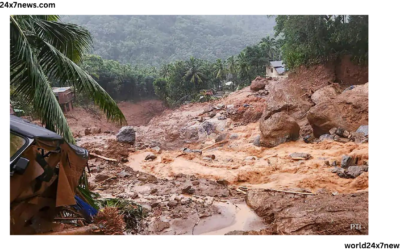Tragedy on the Tracks: Analyzing India’s Train Accidents
:max_bytes(150000):strip_icc():focal(753x657:755x659)/India-train-crash-060323-02-8f5984d7cd8b4f888cf627aaa3258ee8.jpg)
Tragedy on the Tracks: Analyzing India’s Train Accidents and Seeking Solutions
Introduction:
India, a country known for its extensive railway network, has faced its fair share of train accidents over the years. These accidents have caused devastating loss of lives and highlighted the pressing need for improved safety measures. In this article, we will delve into the causes behind train accidents in India, examine the consequences they entail, and explore potential solutions to enhance railway safety in the country.
-
Understanding the Causes of Train Accidents:
a) Human Error: In many cases, train accidents in India can be attributed to human error, including signal neglect, driver fatigue, and inadequate training. Addressing these issues through rigorous training programs, fatigue management systems, and improved supervision can help mitigate the risk.
b) Infrastructure Challenges: India’s vast railway network faces challenges related to maintenance, outdated signaling systems, and insufficient infrastructure upgrades. Investing in modernization, regular maintenance, and implementing advanced signaling technology can significantly reduce accidents caused by infrastructure deficiencies.
c) Overcrowding and Negligence: Overcrowding of trains and platforms, coupled with passenger negligence, can lead to accidents. Stricter enforcement of safety regulations, crowd control measures, and public awareness campaigns can contribute to reducing such incidents.
-
Consequences of Train Accidents:
Train accidents have far-reaching consequences, including loss of precious lives, injuries, property damage, and disruption of transportation services. The impact on families, communities, and the national economy cannot be understated. It is essential to address these accidents comprehensively to ensure the safety and well-being of the public.
-
Steps Towards Enhanced Safety:
a) Investment in Infrastructure: Modernizing railway infrastructure, including tracks, signaling systems, and bridges, is crucial for ensuring safe operations. Regular inspections, maintenance, and timely repairs must prioritize.
b) Advanced Technology Implementation: Embracing cutting-edge technologies such as automatic train protection systems, anti-collision devices, and real-time monitoring can enhance safety and prevent accidents caused by human error.
c) Training and Workforce Development: Strengthening training programs for railway staff, including drivers, maintenance crews, and station personnel, is imperative. Ongoing skill enhancement, addressing fatigue management, and promoting a safety-first culture can significantly reduce accidents.
d) Crowd Management and Public Awareness: Implementing effective crowd control measures at stations, along with awareness campaigns emphasizing safety protocols, can help prevent accidents caused by overcrowding and passenger negligence.
e) Collaboration and International Best Practices: Collaborating with international organizations, sharing knowledge, and adopting proven safety practices from around the world can contribute to significant improvements in India’s railway safety standards.
Final Words
India’s train accidents are a tragic reminder of the urgent need for enhanced railway safety measures. By addressing the causes behind these accidents, investing in infrastructure upgrades, leveraging advanced technologies, improving training programs, and promoting public awareness.
India can strive towards minimizing such incidents. With a steadfast commitment to safety, India can ensure that its railway network becomes a symbol of efficiency, reliability, and, above all, the protection of precious lives.















